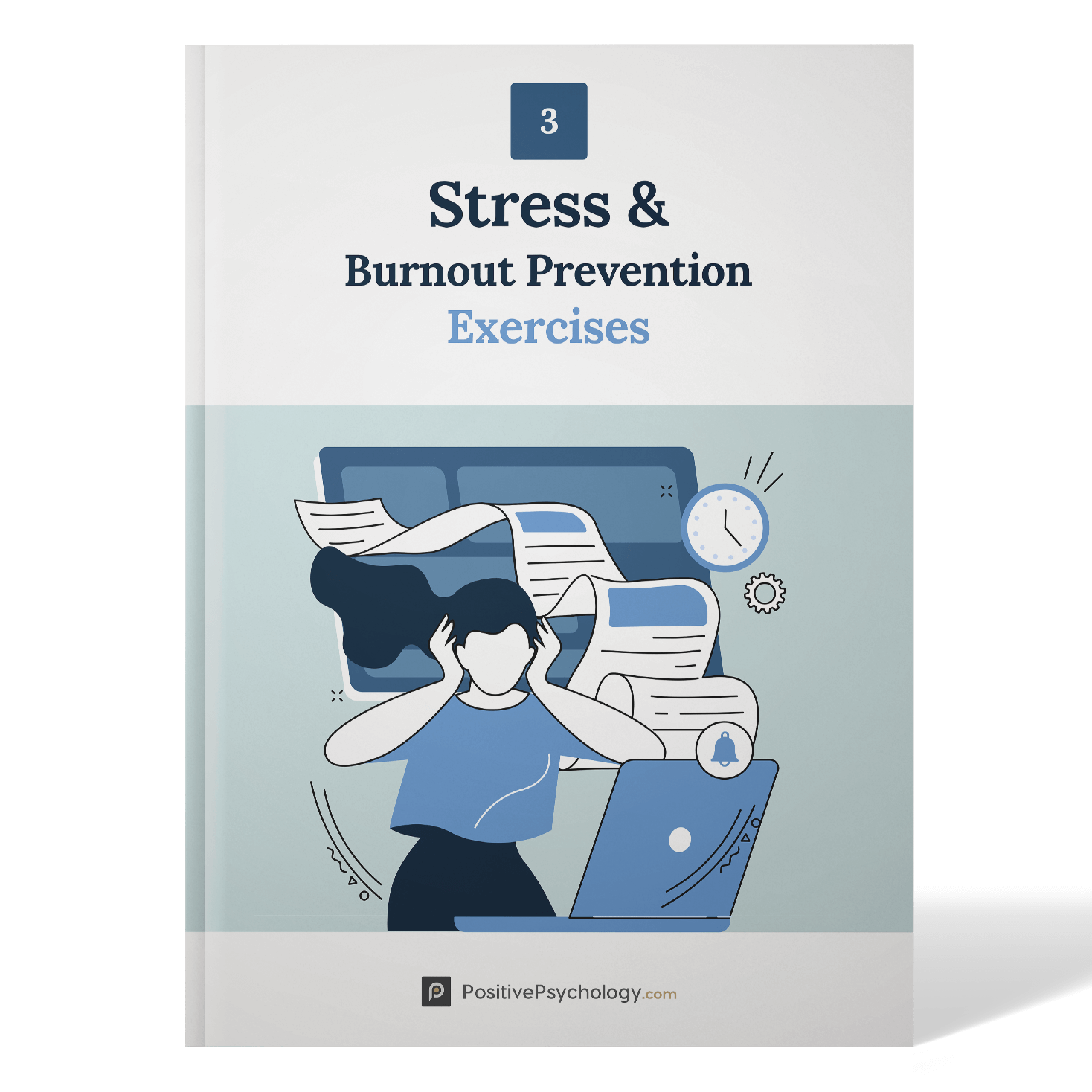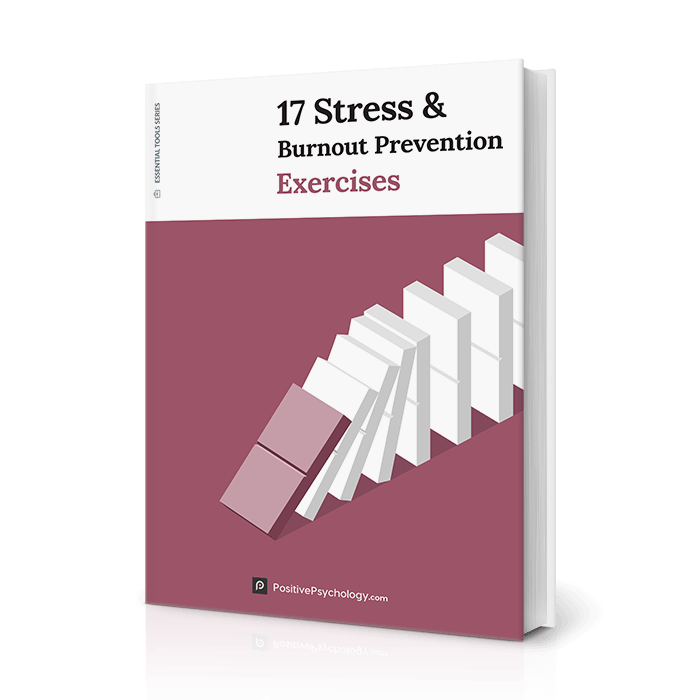15 Behavioral Activation Worksheets for Depression & Anxiety
 Behavioral activation (BA) is a standalone therapeutic treatment typically used to help people with depression.
Behavioral activation (BA) is a standalone therapeutic treatment typically used to help people with depression.
At its core, BA aims to enable individuals to reengage with their lives through specific activation techniques (Westbrook, Kennerley, & Kirk, 2011).
Activation techniques help combat behavioral patterns of withdrawal, avoidance, and inactivity, which may perpetuate depressive symptoms by causing additional, secondary problems.
For example, a common clinical symptom of depression is lethargy, where an individual battles to get out of bed. This may lead to skipping work or avoiding seeing friends, resulting in job loss or impaired social relationships.
BA also encourages positive reinforcement in an individual’s environment in order to help increase positive behaviors and reduce those that maintain the depressive cycle.
In this article, we’ve collated some key worksheets and resources to help your clients engage in healthy behaviors on a regular basis.
Before you continue, we thought you might like to download our three Stress & Burnout Prevention Exercises (PDF) for free. These science-based exercises will equip you and those you work with, with tools to manage stress better and find a healthier balance in your life.
This Article Contains:
4 Best Behavioral Activation Worksheets
When in the depths of depression, becoming behaviorally active may feel overwhelming. Breaking tasks and activities down into manageable chunks is an important step in helping clients overcome this.
One practical approach to address this is through the use of worksheets that encourage the application of activation techniques to everyday life. Worksheets can further help to track a client’s progress and can facilitate the use of positive reinforcement, which can motivate them to implement positive behaviors.
To help your clients get going, we’ve assembled some of the best behavioral activation worksheets to promote getting active in a healthy way.
Activity Schedule
Put simply, an Activity Schedule is a diary sheet for each day of the week, with each day divided into one-hour blocks. Because depression is likely to affect a person’s motivation levels, even scheduling basic daily tasks can help them get going.
Creating structure in the daily routine can help regulate sleeping and eating patterns, which are often disrupted when feeling low. It can also help clients gradually face up to activities they’ve been avoiding, such as hobbies and social engagements.
Activity Menu
For depressed individuals, it can sometimes be hard to visualize activities that they may find enjoyable, let alone actually do them. This Activity Menu can help identify tasks that a person can engage with as they start to get more active.
It targets some key life areas that can help people feel better:
- Connecting with others
- Exercising
- Expanding the mind
- Self-care
- Writing
- Creativity
- Caring for others
- Planning and goal setting
The activity menu is a useful tool for gradually building a client’s favorite activities into their daily schedule.
Behavior Contract
As part of promoting healthy behaviors and minimizing negative ones, it is important to surround yourself with people and environments in which this is encouraged. While self-motivation is the key to success, support from others who care about you can certainly aid in your progress.
Lejuez, Hopko, LePage, Hopko, and McNeil (2001) suggest talking to someone trustworthy, such as friends and family, about the need to increase healthy behaviors and avoid those that are detrimental to wellbeing. Clients may wish to ask their loved ones to help them pay attention to positive, rather than negative, experiences.
For instance, they may ask friends to only let them spend 25% of their time together talking about their problems and what’s bothering them, leaving the rest of the time to speak about positive experiences or a fun activity that they can do.
This Behavior Contract is a useful way for clients to create a concrete agreement with their friends and family, identifying how they can help the client build better wellbeing.
Pleasurable Activity Journal
When a person is clinically depressed, they can experience anhedonia, which is a lack of pleasure in activities that they used to find enjoyable (Treadway & Zald, 2011).
It can be useful for clients to outline which activities they typically enjoy and gradually build them into their recovery plan. It is further useful to track how pleasurable the client finds such activities over time, to monitor progress. The Pleasurable Activity Journal is a useful tool to help with this.
CBT Worksheets for Depression and Anxiety

It examines the relationship between a person’s thoughts, feelings, and behaviors and helps individuals to understand and alter negative patterns.
One of the core concepts of CBT is that you ‘feel the way you think.’ CBT works on the idea that if you can think in more helpful ways, you can live a more fulfilling, productive, and happy life.
When faced with emotional difficulties, it’s easy to think that stressful life situations are the direct cause. However, in reality, how you feel and behave are often influenced by your perceptions, thoughts, and beliefs about the events.
With this in mind, we’ve put together key worksheets to help your clients challenge unhelpful thinking.
Increasing awareness of cognitive distortions
Cognitive distortions, or ‘thinking errors,’ are habitual ways of thinking that are often inaccurate and negatively biased. Most of us will experience some form of skewed thinking at least once in our lives, so it’s important to learn how to recognize and tackle these distortions when they arise.
Some of the most common cognitive distortions include:
- Catastrophizing
When we jump to the worst possible conclusion, often using very little information to reach our decision. - All-or-nothing thinking
When we think of situations, people, and events in extremes. - Overgeneralizing
When we draw very broad conclusions based on limited experience or information. - Mind reading
When we think that we know what another person is thinking or feeling, without them actually saying so. - Fortune telling
When we predict negative events in the future, without realistically considering the chances of that outcome. - Labeling
When we attach a single negative descriptor to events and people (including ourselves). - Emotional reasoning
When we believe something to be true because it feels true. - Personalizing
When we think everything people say or do is directly related to us in some way.
The Unhelpful Thinking Styles worksheet will help clients become more aware of any distorted thinking so that its influence on their feelings and behaviors is reduced. This resource is particularly relevant when working with clients for whom maladaptive thinking styles are linked to symptoms of depression.
Thought Record (Cognitive Restructuring) Worksheet
As part of assessing thinking and identifying cognitive distortions, it’s useful to keep a thought record and consider ways to restructure unhelpful thoughts and perceptions.
The Thought Record worksheet will help clients to:
- Pause and reflect on their thoughts
- Identify and understand potential triggering events
- Recognize negative automatic thoughts
- Assess their emotional reaction
- Create alternative thoughts through reinterpretation (restructuring)
- Reassess their emotional response
Decatastrophizing
The term ‘catastrophizing’ originated from the work of Albert Ellis (1962) and was later extended upon by Beck, Rush, Shaw, and Emery (1979) to describe a maladaptive thinking style employed by individuals with anxiety or depression.
Essentially, catastrophic thinking is when we jump to the worst possible conclusions, with very little hard evidence (Quartana, Campbell, & Edwards, 2009). For example, a student who catastrophizes may think they will be kicked out of a program after failing one test. They may drop out, concluding that they will be a ‘failure’ for life.
In reality, failing to pass one test is unlikely to result in such a catastrophe as being removed from a program, and this thinking style is unhelpful to the individual trying to reach their goals.
Use this Decatastrophizing Worksheet to help clients restructure their thoughts when they feel overwhelmed by catastrophic thinking.
Recognizing Rumination
Rumination, which is characterized by persistent negative thinking, has been identified as a key risk factor for depression (Joormann, Yoon, & Zetsche, 2007; Nolen-Hoeksema, Wisco, & Lyubomirsky, 2008).
Ruminating on negative thoughts means there is less space in our working memory to focus on other information, which may be more positive.
Indeed, rumination has been associated with deficits in cognitive control, meaning it’s harder to direct our attention toward goal-directed tasks and away from distracting irrelevant information (Beckwé, Deroost, Koster, De Lissnyder, & De Raedt, 2014; Hallion, Ruscio, & Jha, 2014).
Commonly, ruminative thinking may involve persistently thinking about events that have already happened or questions that cannot be answered, such as:
“Why do I always feel this way?”
“If only I hadn’t said that to him.”
“If only I’d done X, Y, or Z differently.”
The Recognizing Rumination worksheet can help clients identify persistent thoughts that are interfering with their day-to-day lives.
Table of Common Core Beliefs
‘Core beliefs’ refer to a person’s ‘bottom line’ (Fennell, 1997) – their enduring, fundamental beliefs about themselves, others, and the world around them. Core beliefs are not always negative; however, those that are can be problematic.
A number of factors characterize core beliefs:
- They are often developed early as a result of childhood experience. They can, however, change later in life (e.g., as a result of adult trauma).
- They may exist out of conscious awareness.
- They can be exhibited through absolute statements and assumptions such as ‘the world is a terrible place.’
Because these beliefs are deeply held at our core, we may not be particularly aware of them. The Table of Common Core Beliefs can help your clients identify which negative core beliefs they are holding on to.
The Downward Arrow Core Belief Technique
The Downward Arrow Core Belief Technique is a method of Socratic questioning that can help identify problematic core beliefs. It involves identifying situations that bring about negative emotions such as depression, guilt, or shame.
Once a situation that brings up negative feelings has been identified, the client has to define what negative automatic thoughts arise in relation to the situation. The next step (narrowing down) encourages the client to keep asking themselves what the previous answer is likely to represent until they reach an absolute, global statement (reflecting their core belief).
SMART goal setting
One of the fundamental priorities of CBT is to help clients move away from their problems and toward their goals. For therapy to be most effective, it is typical to work toward mutually agreed upon, clearly defined milestones.
Goal setting indicates the possibility for change, which can give hope and reduce helplessness in the face of overwhelming emotions and difficult situations. Many individuals cannot overcome their problems because their goals are too vague. Detailing goals using the SMART technique can help with this.
Put simply, goals should be:
Specific
Measurable
Attainable
Realistic
Time-bound (allowing enough time for achievement)
Specifying goals with this level of detail can give clients a sense of autonomy and help break milestones down into manageable steps.
PositivePsychology.com’s CBT Resources
Our free Positive CBT Exercises Pack includes three resources that we believe to be most useful for helping clients to alter their negative patterns of thoughts, feelings, and behaviors, while promoting a positive view of the self.
This pack features three of our top tools from the Positive Psychology Toolkit©, all of which center on the theme of positive CBT:
- Solution-Focused Guided Imagery Exercise
This visualization helps clients recognize how they can apply their strengths to overcome a problem or adversity. In this exercise, clients take forty minutes to picture a problem in detail, imagine a reality where it is resolved, and leverage their strengths to set goals that may help bring about this reality. - Reframing Critical Self-Talk
This exercise helps clients strengthen awareness of inner criticism and promote a more self-compassionate stance towards the self. To do this, clients will commit one week to noticing and pausing when critical self-talk arises and consciously rephrase this talk to be more in line with how they’d speak to a loved one. - Strengths Spotting by Exception Finding
This exercise helps you assess a client’s ability to deal with challenges while also increasing their confidence. In it, clients will reflect on past challenges and the strengths they used to overcome them to discover how they may apply these strengths to their present problems.
If you’re looking for more science-based ways to help others manage stress without spending hours on research and session prep, this collection contains 17 validated stress management tools for practitioners. Use them to help others identify signs of burnout and create more balance in their lives.
A Take-Home Message
It is natural that when we are feeling low, our motivation levels for common tasks and previously enjoyable activities can take a nosedive. This means there are fewer opportunities for positive and rewarding experiences. Often, the less we do, the worse we feel, leading to a perpetual cycle of inactivity and low mood.
Behavioral activation has proven to be an effective treatment for clinical depression (Jacobson et al., 1996). It helps clients to create structure with their day-to-day tasks while aiding in the rediscovery of recreational activities that they once found pleasurable. Reinforcing healthy, enjoyable activities can go a long way in helping a depressed individual feel better.
Sometimes getting going is the hardest part, but with some structure in place and a little nudge in the right direction, we can all move toward healthier, happier behaviors.
We hope you enjoyed reading this article. Don’t forget to download our three Stress & Burnout Prevention Exercises (PDF) for free.
- Bannink, F. (2012). Practicing positive CBT: From reducing distress to building success. John Wiley & Sons.
- Beck, A. T., Rush, A. J., Shaw, B. F., & Emery, G. (1979). Cognitive therapy of depression. Guilford Press.
- Beckwé, M., Deroost, N., Koster, E. H. W., De Lissnyder, E., & De Raedt, R. (2014). Worrying and rumination are both associated with reduced cognitive control. Psychological Research, 78(5), 651–660.
- Ellis, A. (1962). Reason and emotion in psychotherapy. Lyle Stuart.
- Fennell, M. J. (1997). Low self-esteem: A cognitive perspective. Behavioural and Cognitive Psychotherapy, 25(1), 1–26.
- Hallion, L. S., Ruscio, A. M., & Jha, A. P. (2014). Fractionating the role of executive control in control over worry: A preliminary investigation. Behaviour Research and Therapy, 54, 1–6.
- Jacobson, N. S., Dobson, K .S., Truax, P. A., Addis, M. E., Koerner, K., Gollan, J. K., … Prince, S. E. (1996). A component analysis of cognitive-behavioral treatment for depression. Journal of Consulting and Clinical Psychology, 64(2), 295–304.
- Joormann, J., Yoon, K. L., & Zetsche, U. (2007). Cognitive inhibition in depression. Applied and Preventive Psychology, 12(3), 128–139.
- Lejuez, C. W., Hopko, D. R., LePage, J. P., Hopko, S. D., & McNeil, D. W. (2001). A brief behavioral activation treatment for depression. Cognitive and Behavioral Practice, 8(1), 164–175.
- Mazar, A., & Wood, W. (2018). Defining habit in psychology. In B. Verplanken (Ed.). The psychology of habit: Theory, mechanisms, change, and contexts. Springer.
- Nolen-Hoeksema, S., Wisco, B. E., & Lyubomirsky, S. (2008). Rethinking rumination. Perspectives on Psychological Science, 3(5), 400–424.
- Quartana, P. J., Campbell, C. M., & Edwards, R. R. (2009). Pain catastrophizing: A critical review. Expert Review of Neurotherapeutics, 9(5), 745–758.
- Treadway, M. T., & Zald, D. H. (2011). Reconsidering anhedonia in depression: Lessons from translational neuroscience. Neuroscience & Biobehavioral Reviews, 35(3), 537–555.
- Westbrook, D., Kennerley, H., & Kirk, J. (2011). An introduction to cognitive behaviour therapy: Skills and applications. Sage.
- Wood, W., & Rünger, D. (2016). Psychology of habit. Annual Review of Psychology, 67, 289–314.
Read other articles by their category
- Body & Brain (49)
- Coaching & Application (57)
- Compassion (26)
- Counseling (51)
- Emotional Intelligence (24)
- Gratitude (18)
- Grief & Bereavement (21)
- Happiness & SWB (40)
- Meaning & Values (26)
- Meditation (20)
- Mindfulness (45)
- Motivation & Goals (45)
- Optimism & Mindset (34)
- Positive CBT (28)
- Positive Communication (20)
- Positive Education (47)
- Positive Emotions (32)
- Positive Leadership (18)
- Positive Parenting (4)
- Positive Psychology (33)
- Positive Workplace (37)
- Productivity (16)
- Relationships (46)
- Resilience & Coping (36)
- Self Awareness (21)
- Self Esteem (38)
- Strengths & Virtues (32)
- Stress & Burnout Prevention (34)
- Theory & Books (46)
- Therapy Exercises (37)
- Types of Therapy (64)




